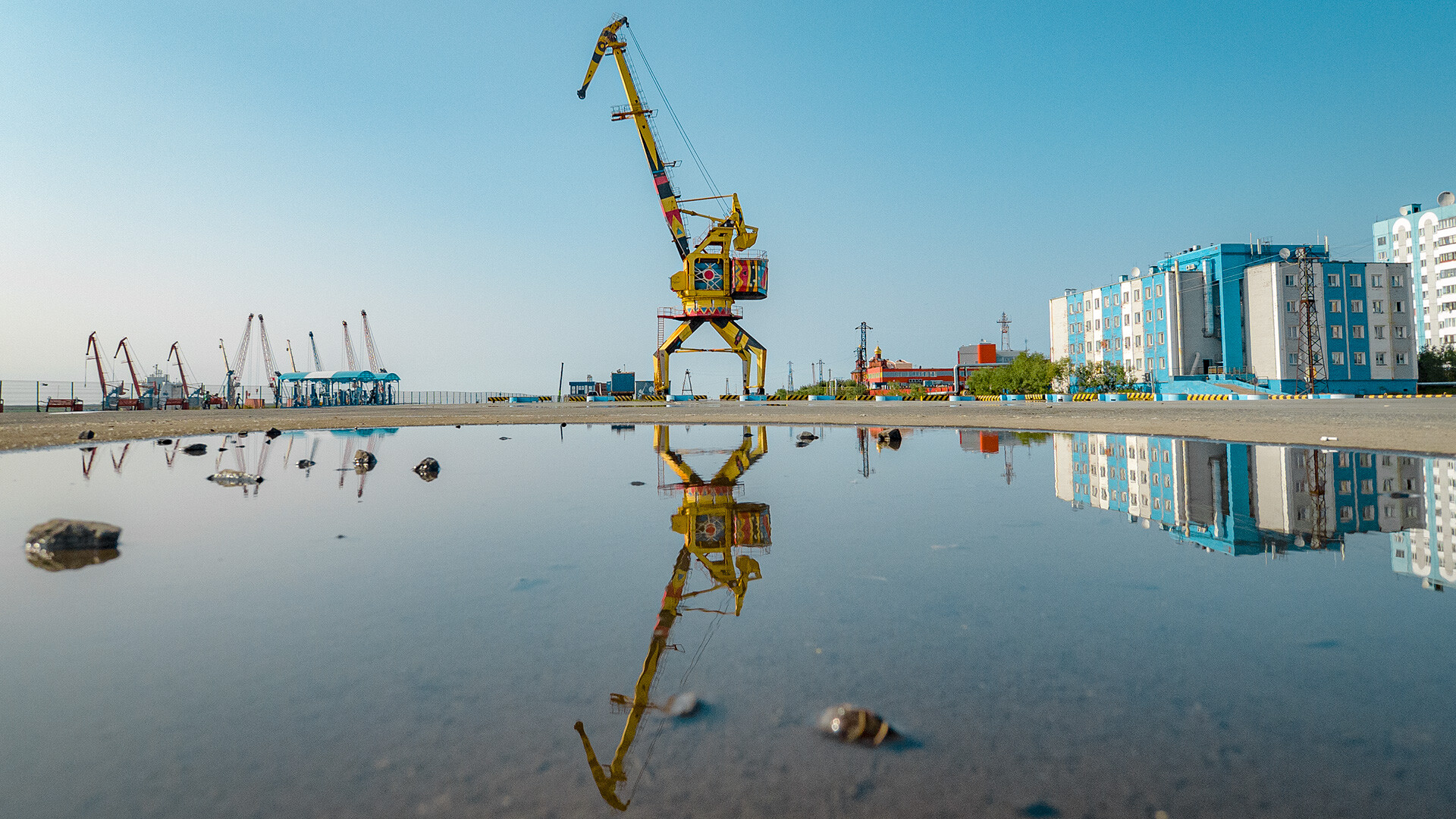
A 'giraffe' in the port of Dudinka.
Pavel Kuzmichev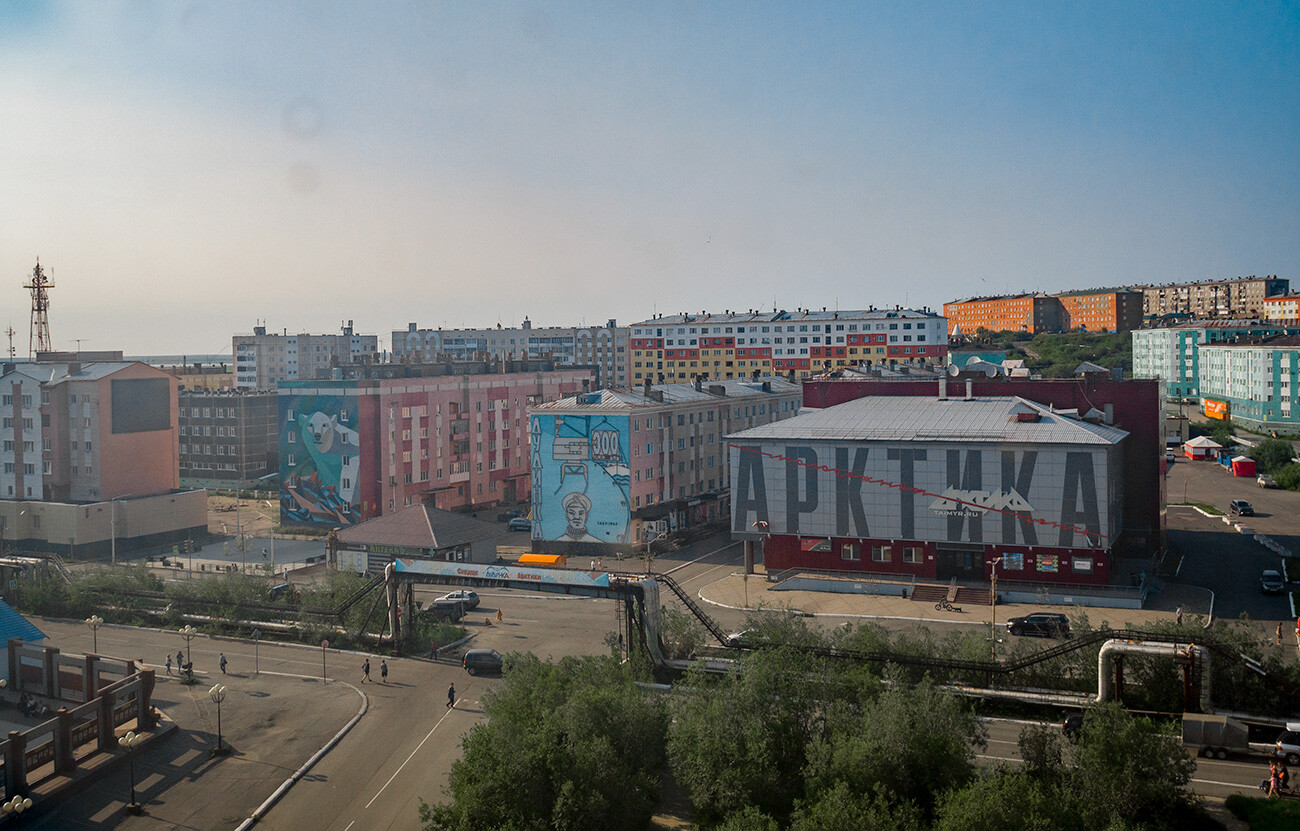
The view of Dudinka.
Pavel KuzmichevThe port of Dudinka is unique. It is the most northerly international sea port in Russia. It is both a sea and river port and it receives and sends cargo both along the River Yenisey (via Igarka and Krasnoyarsk) and by the Northern Sea Route (it is linked to Murmansk and Arkhangelsk via the Kara Sea and then eastwards to Asia).

The port of Dudinka.
Pavel KuzmichevThe work of the port in Dudinka made possible the emergence of the northern industrial center that is Norilsk. For a big industrial city to grow in the middle of the wooded tundra, building materials, fuel and raw materials were needed. All of them were delivered through the port in Dudinka, at the time, a small settlement on the Yenisey.
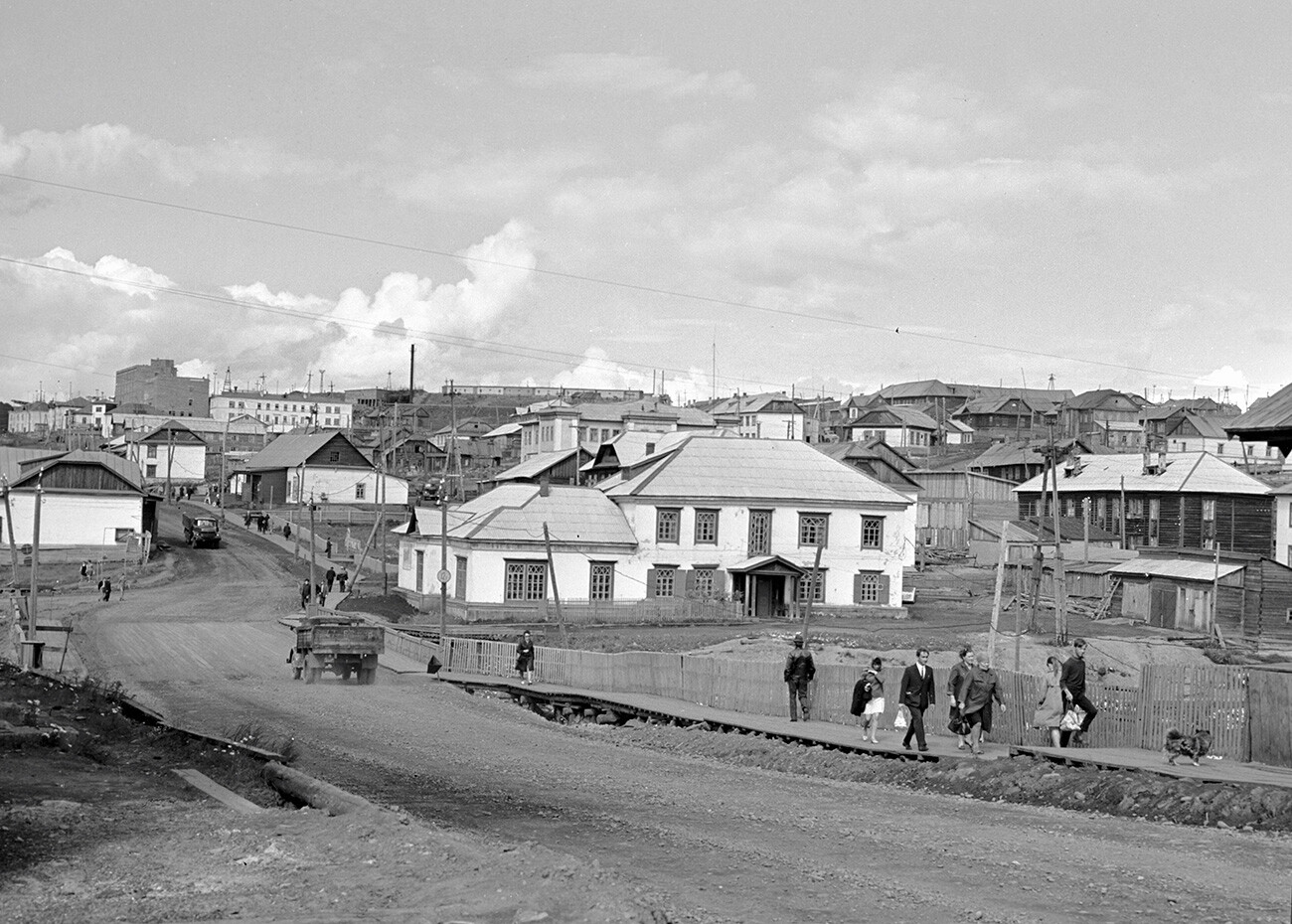
Dudinka in 1970s.
Igor Vinogradov/SputnikIt was Norillag prisoners who began building the port in 1935, but, in the 1950s, when the labor camp was closed, young specialists from all over the country began to volunteer to go there, as well as to Norilsk.
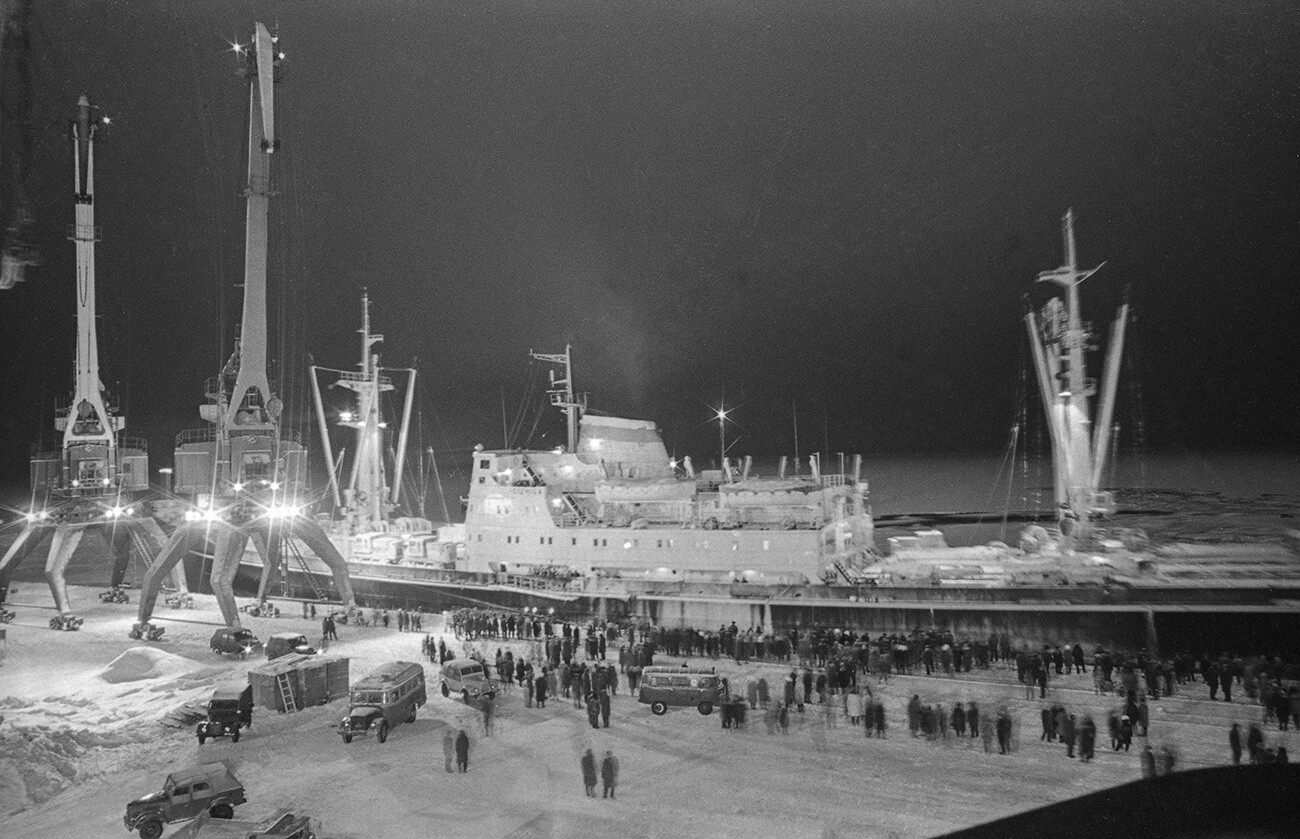
The port of Dudinka in 1970.
Anatoly Polyakov/TASSTwenty thousand people live in Dudinka today and one in 10 have a job linked to the port. We recently managed to visit this fascinating place.

The navigation season on the Yenisey is very brief: literally from mid-June to early October. During this time, apart from seafaring ships, the port also receives river vessels from Krasnoyarsk (about 2,000 km away by water) that bring fresh food and essential goods for the residents of Dudinka and Norilsk.
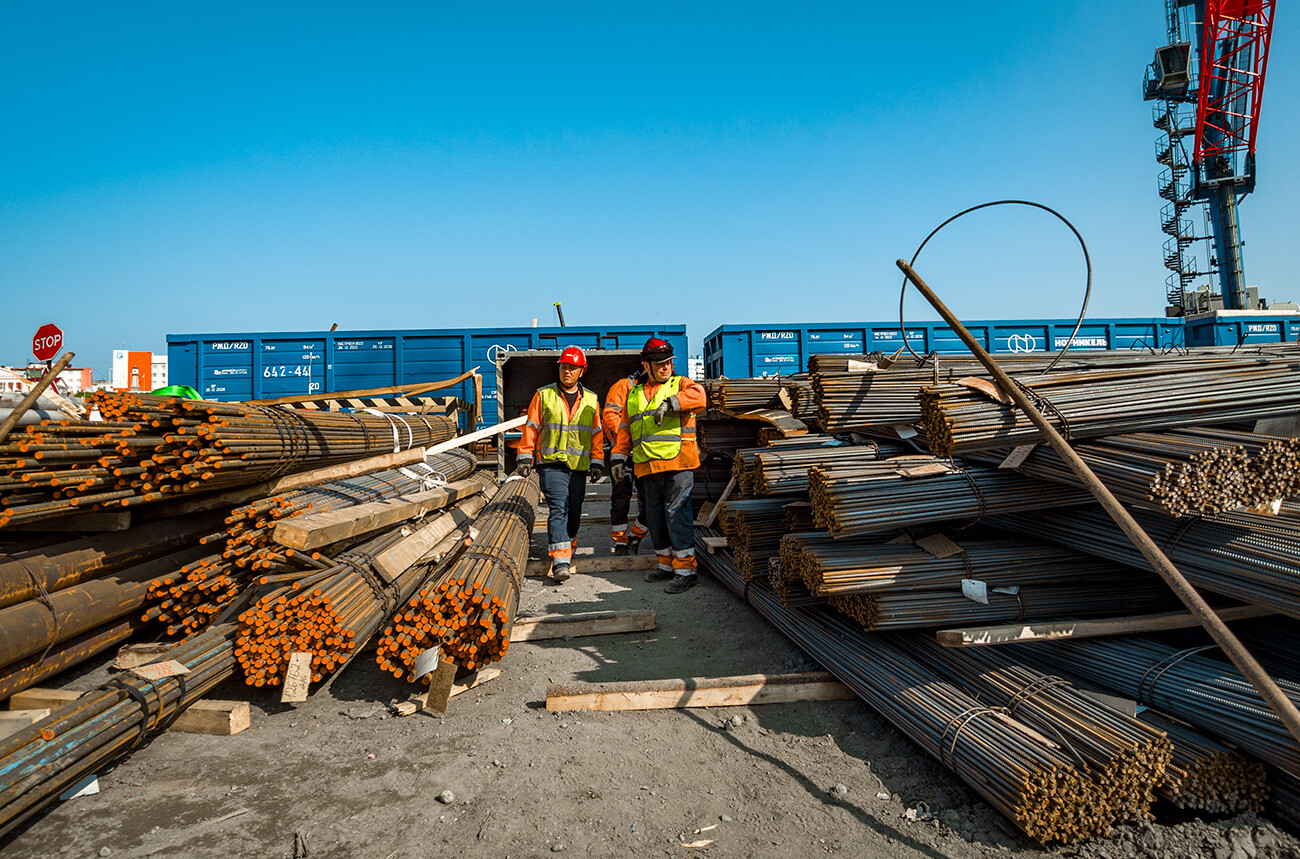
As soon as the navigation is possible, fruit and vegetable stalls spring up in the streets and food prices in grocery stores drop drastically. Passenger vessels and large cruise ships also come to Dudinka along the Yenisey.
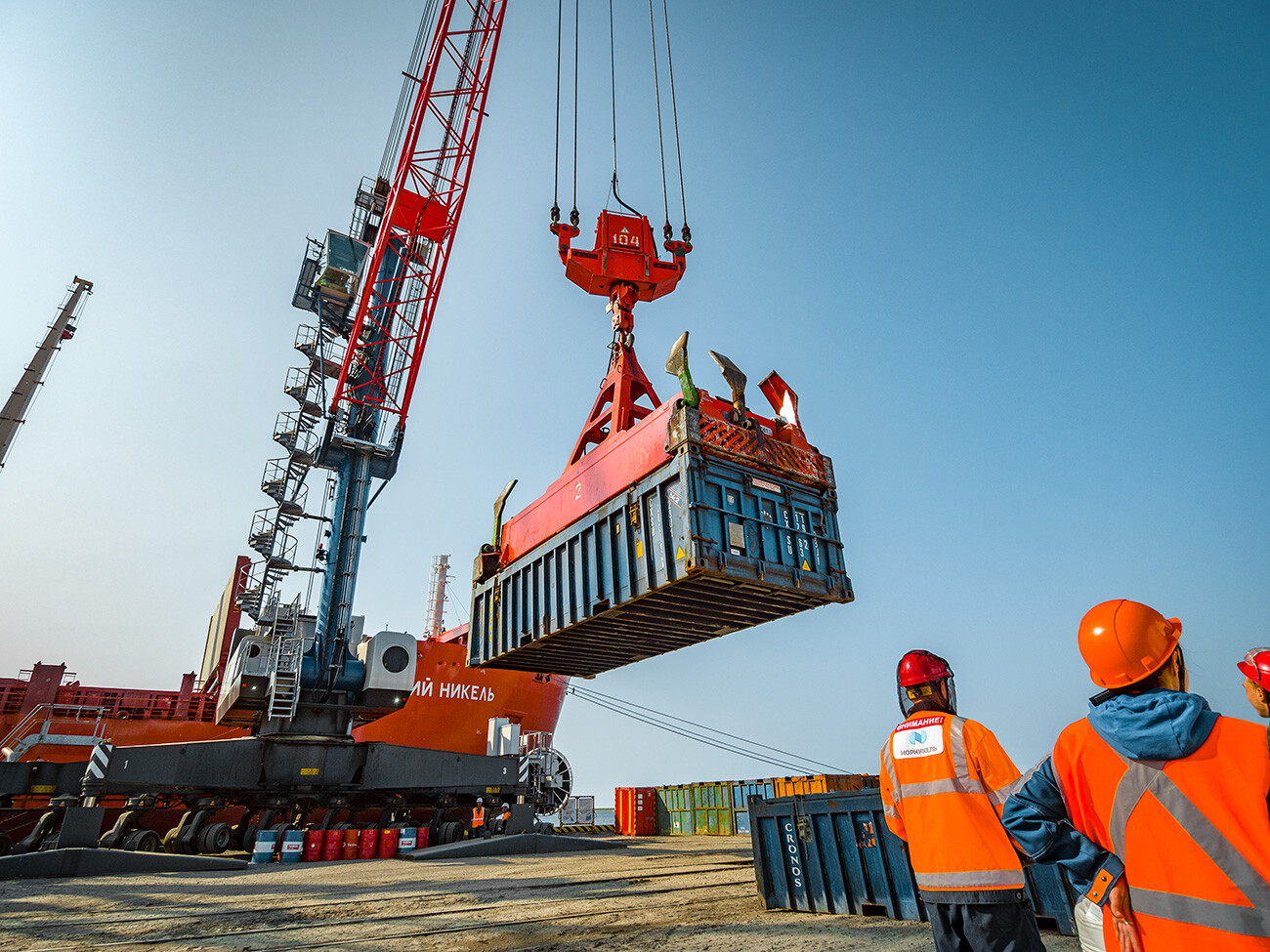
And when the Yenisey is icebound, Dudinka only receives and dispatches ice-class vessels traveling along the Northern Sea Route. They take away the products of the Norilsk Combine and bring the fuel and raw materials required for the operation of industrial plants.
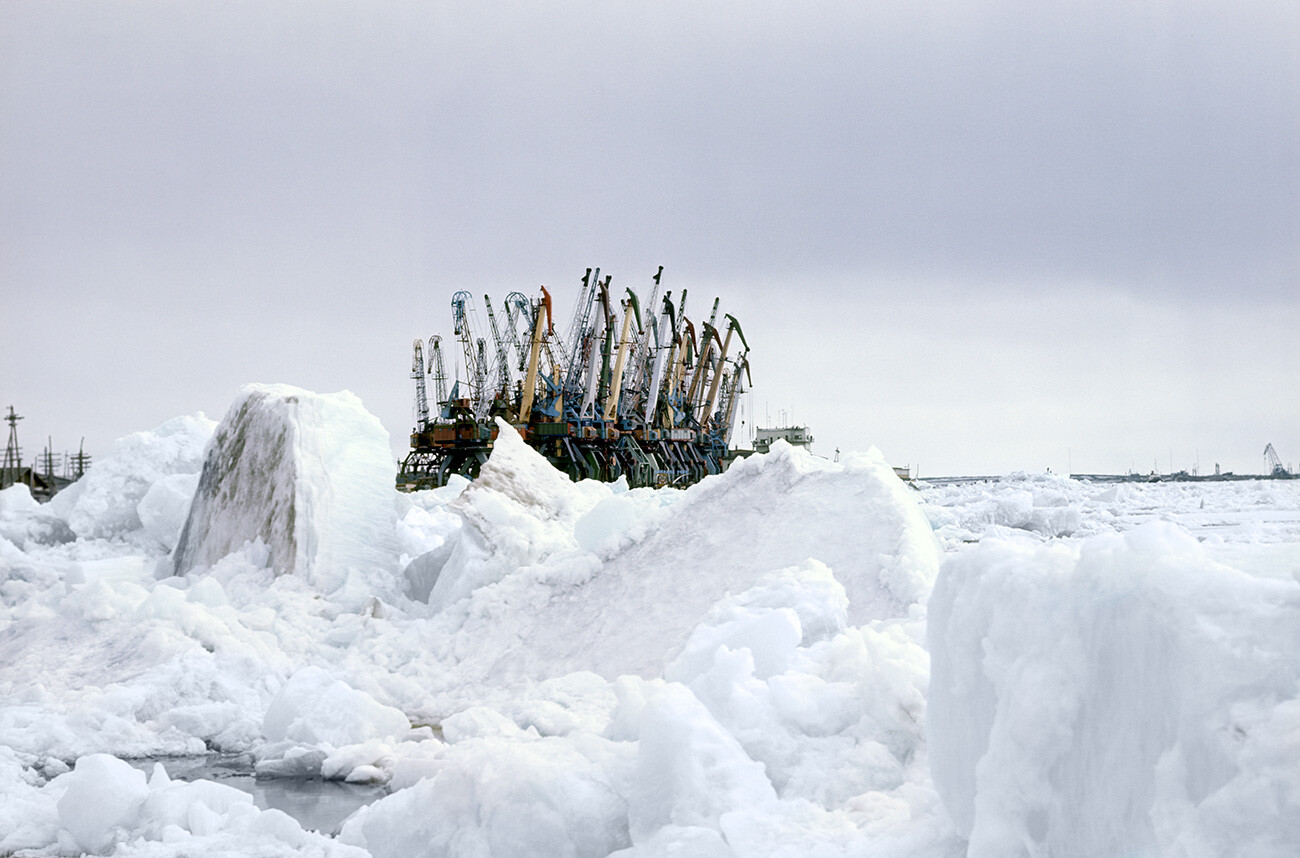
The port during the icebound, 1977.
Chin-Mo-Tsai/SputnikThe port operates every day except for a couple of weeks a year – it is the only port in the world that is flooded during the spring high water. The ice begins to break up on the Yenisey at the end of May. It looks very impressive: Enormous blocks of ice race past in the water. People from all over the area come to witness the spectacle!
But, workers at the port have no time to admire the scene. For the duration of the flooding caused by the spring thaw, the port stops receiving and sending cargo and workers move the cranes to special holding areas where they remain for the duration of the high water.
More than 50 ships call at Dudinka during the navigation season. On the day we visited, 11 vessels were waiting to be unloaded – one-to-two days' work, as we were told.
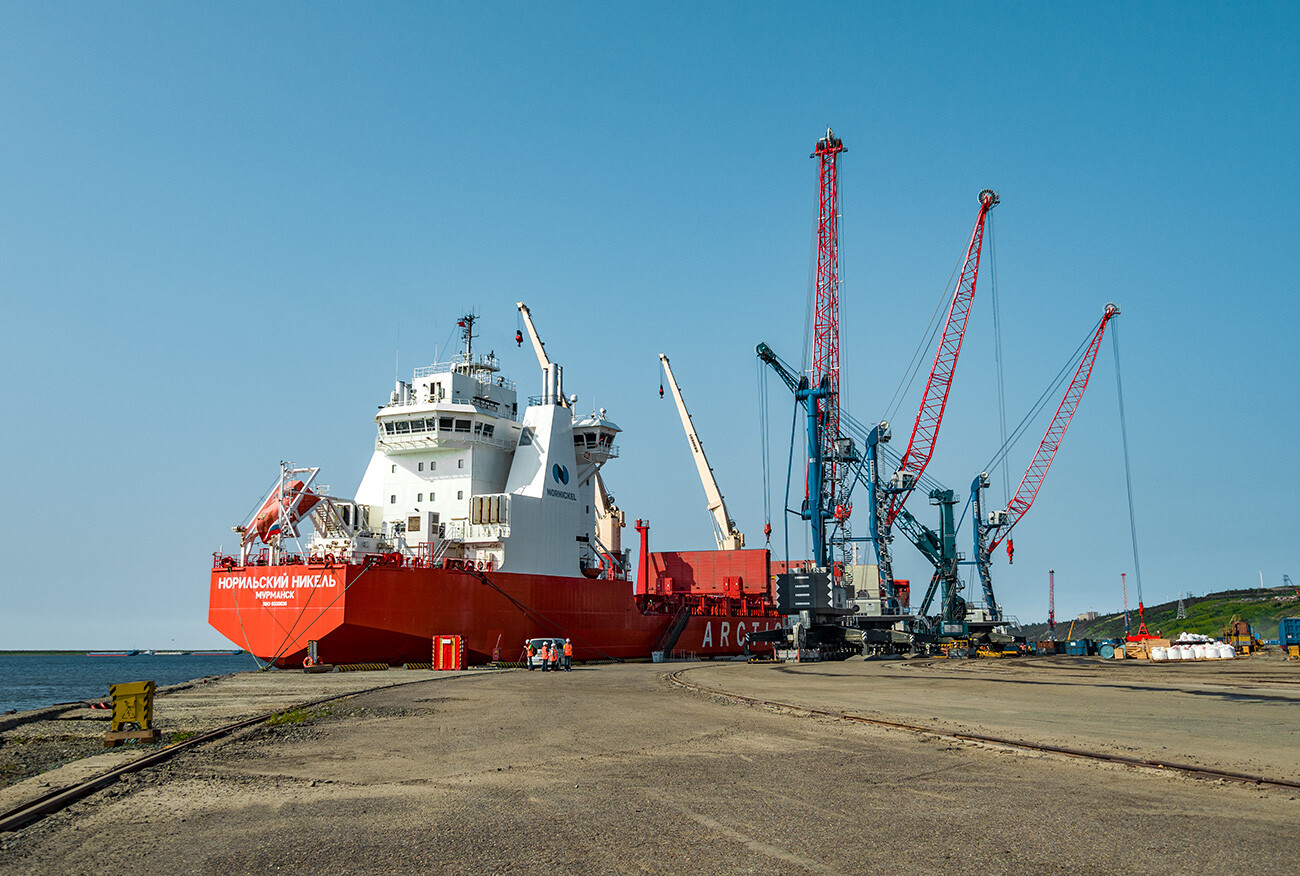
The ‘Norilskiy Nickel’ ship.
Pavel KuzmichevWe even managed to climb aboard the ‘Norilskiy Nickel’ (ice class 7) container ship and talk to its captain.
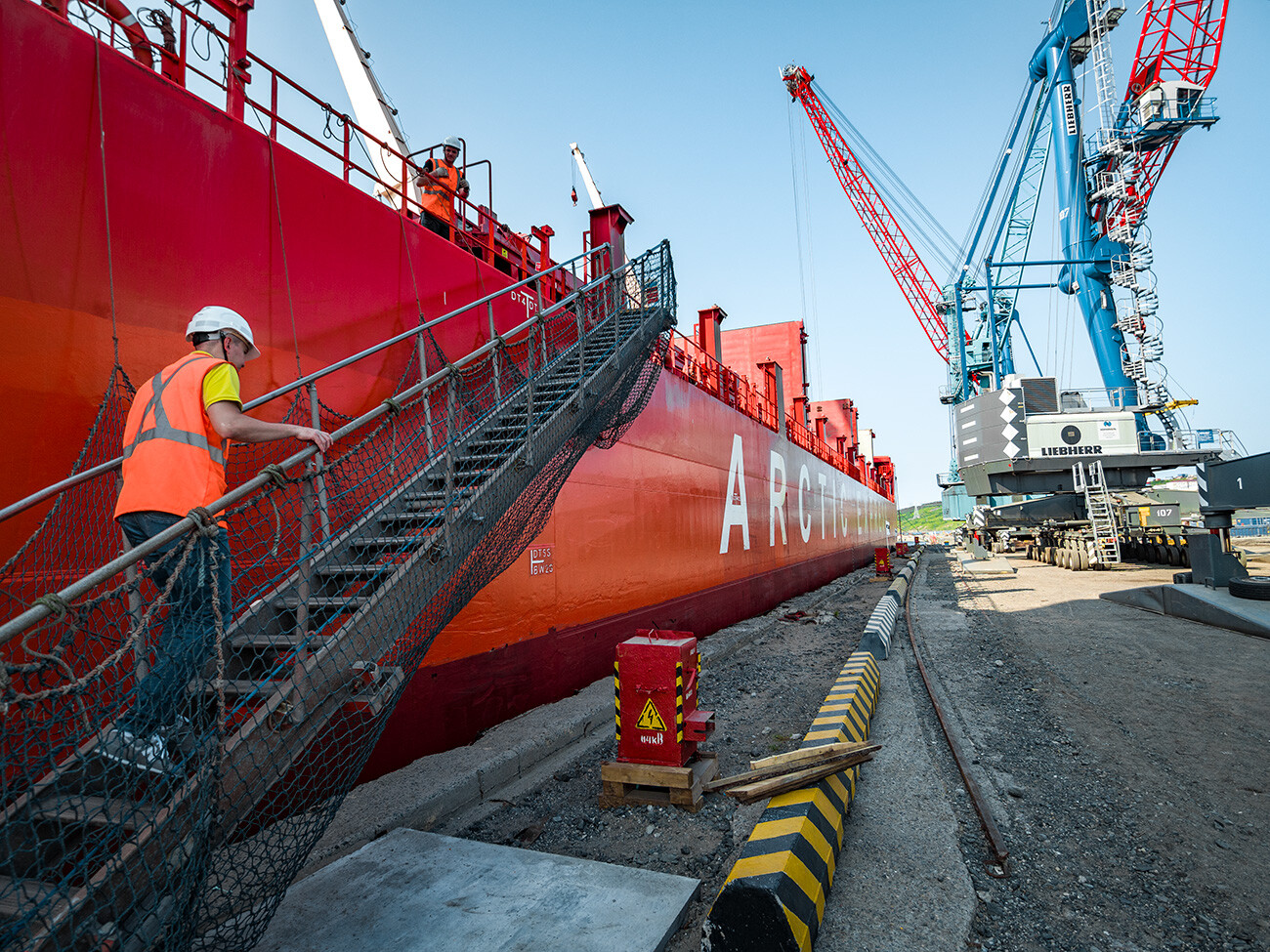
"Our ship can cope with ice up to two meters high. We don't go straight ahead, however, but seek out cracks which are easier to negotiate," according to Captain Andrei Shlapak. "The thing is that, in winter, the River Yenisey has ‘pack ice’ – in other words, ice dating back years – which can also move around by itself."
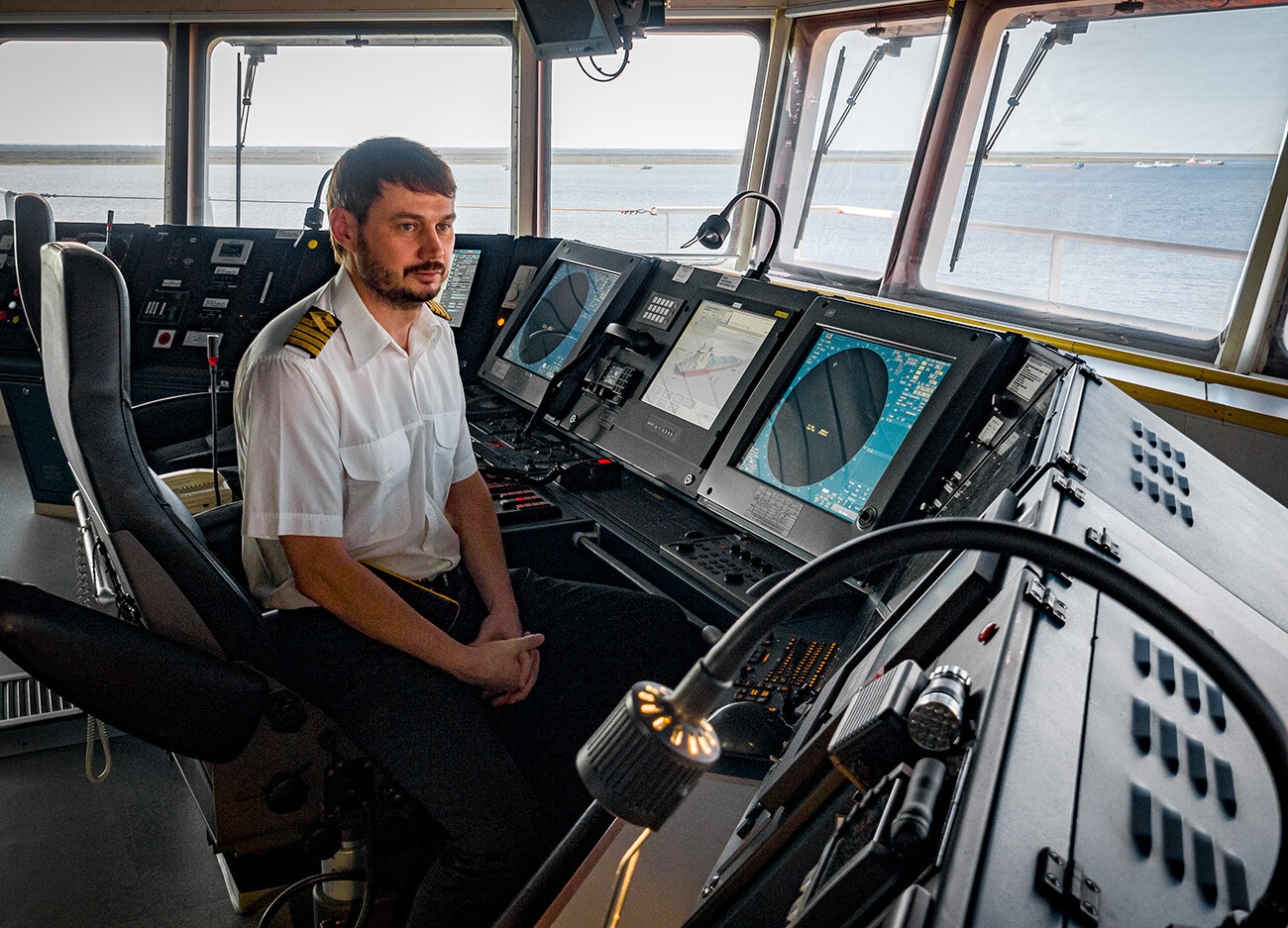
Andrei Shlapak.
Pavel KuzmichevIn order to reduce the time and cost of voyages, a nuclear-powered icebreaker is periodically summoned. It cuts "pack ice channels", which other ships can follow to reach the sea. Of course, they get clogged up during falls of snow and sailors thus prefer to work in frosty and snowless weather. "On reaching floating ice, we continue on our way independently," the captain says.
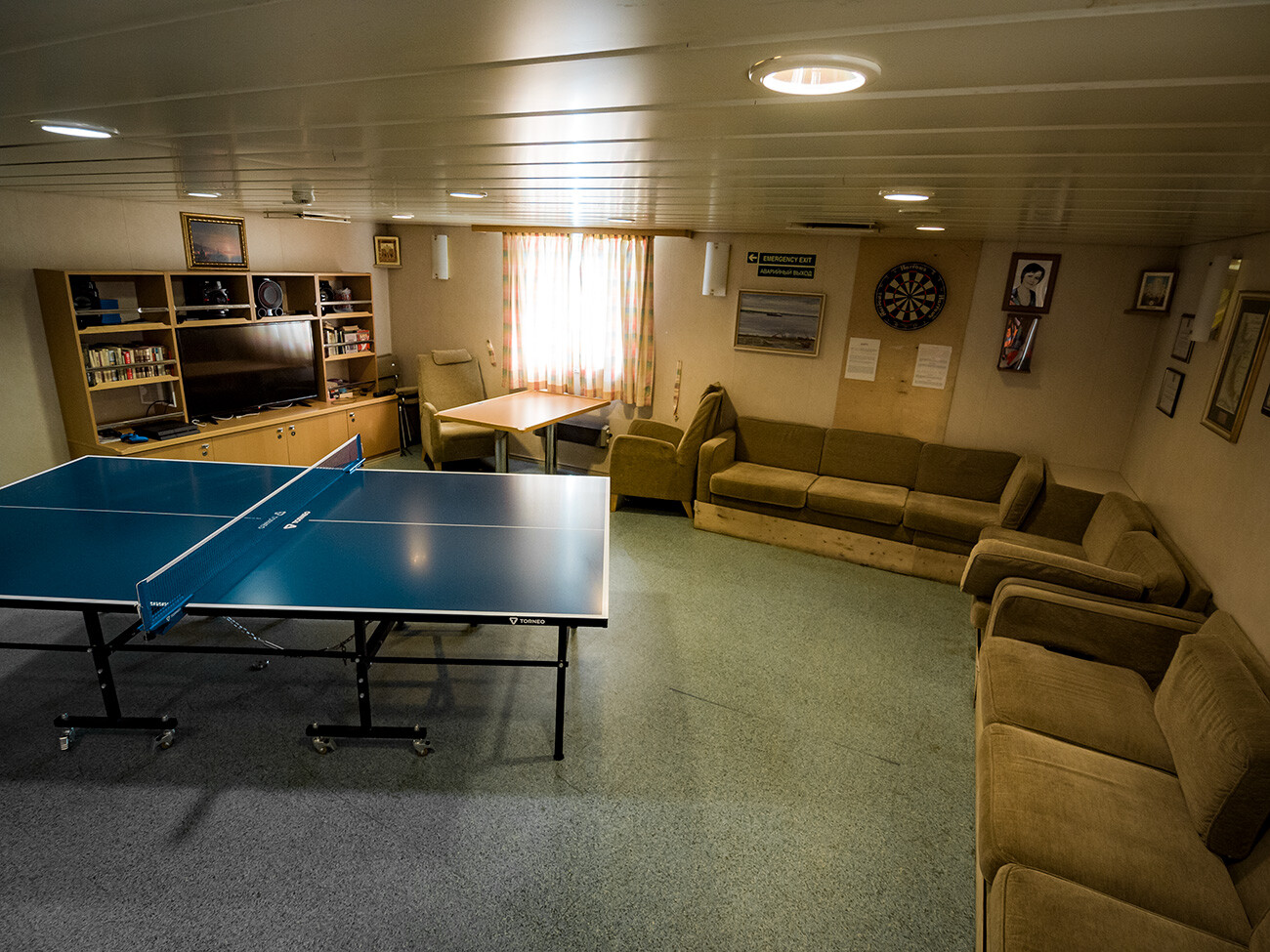
The recreation room.
Pavel KuzmichevAndrei told us that storms frequently occur in the Northern seas and that the weather in the second half of September is particularly dangerous, as the storms are accompanied by icing. "When that happens, we yearn for the start of sea ice, because when we sail in ice, the ship doesn't get tossed around," he says.
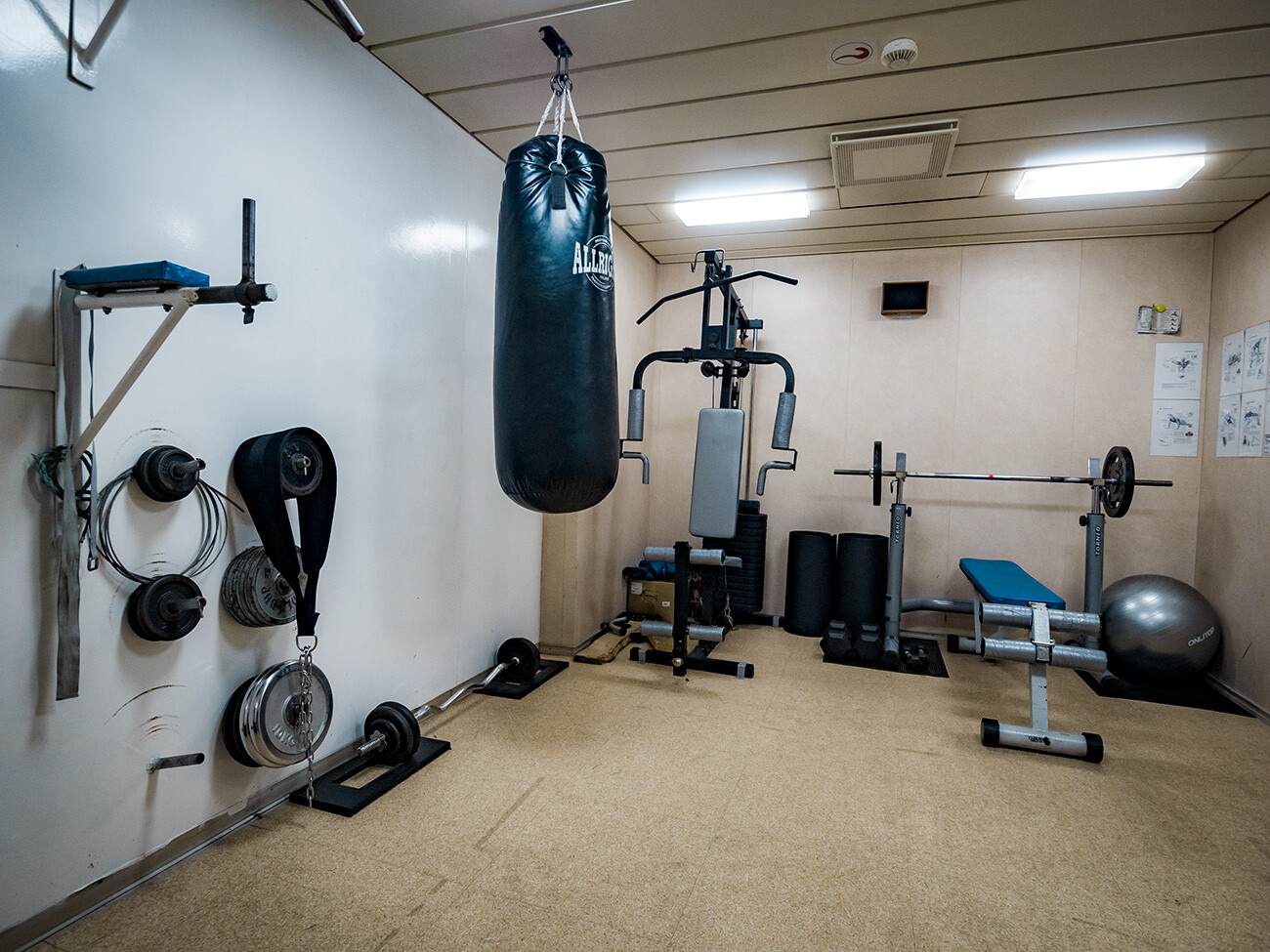
Gym aboad the ship.
Pavel KuzmichevThe ‘Norilskiy Nickel’ container ship's usual destinations are Murmansk and Arkhangelsk, but there are also voyages to China: The Northern Sea Route is the shortest distance from Europe to Asia. "It turns out that you can get from here to China in just two weeks in summer," the captain says. Naturally, the times will be extended in the ice season.

The crew spend five days at sea on average, working in shifts lasting two months in all and rotating with another crew.
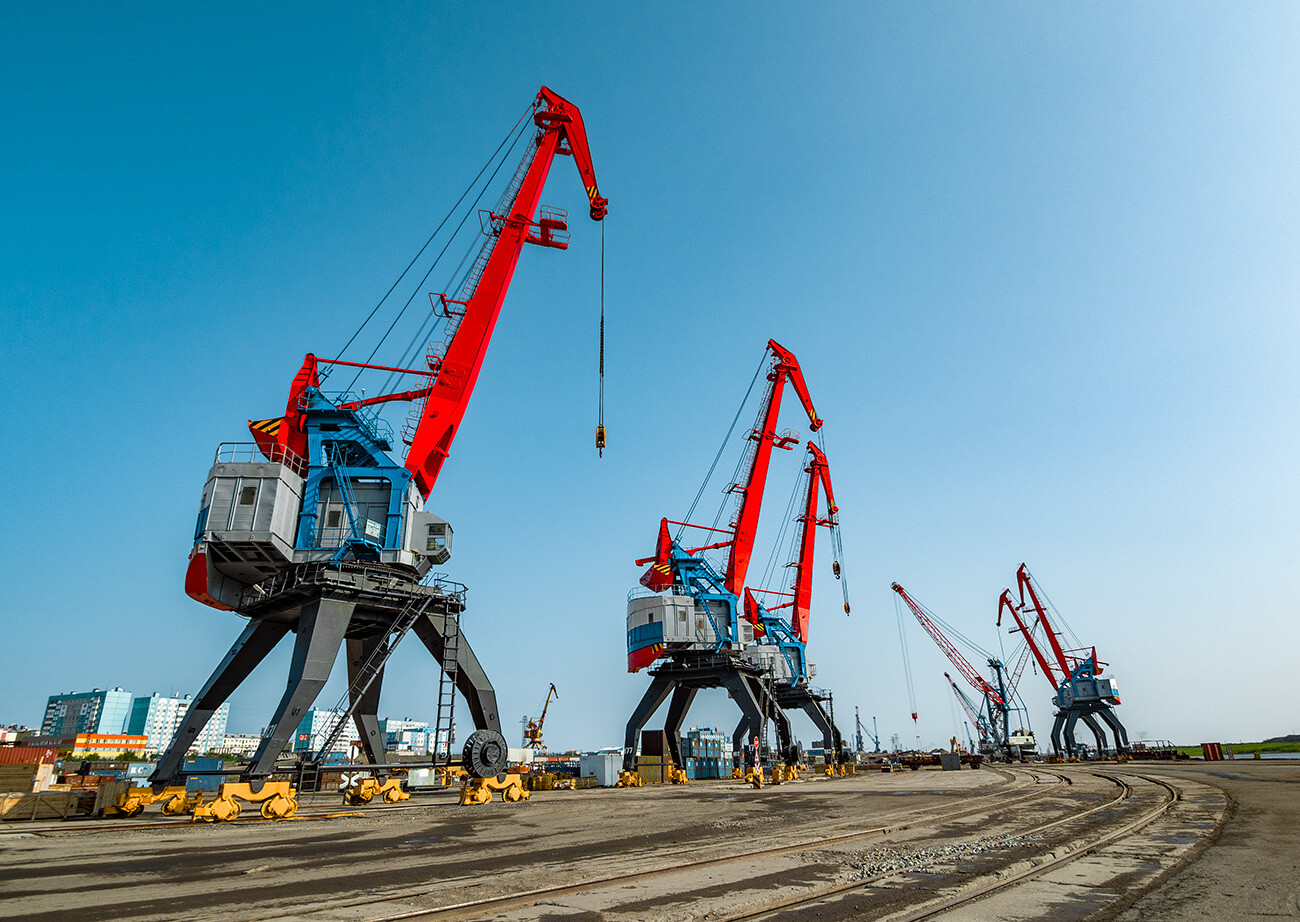
The ship's interior proved to be fairly spacious, modern and even, in its own way, comfortable. There is a recreation room with sofa, TV and ping-pong table, a small gym and a sauna. But, we were won over most of all by the abundance of potted flowers cultivated by the seamen. The captain told us that many of the crew on board were keen on keeping plants and he tried to water them at the right time.

Unlike Norilsk, Dudinka is an old settlement. It was founded in 1667 as winter quarters by a "strelets" (i.e. solder) named Ivan Sorokin from the trading town of Mangazeya, when, together with a small detachment, he set off to collect a tax known as ‘yasak’ (a tax paid in furs).

Dudinka youth.
Pavel KuzmichevToday, Dudinka is the administrative center of the Taymyrsky Dolgano-Nenetsky District of Krasnoyarsk Territory. The district is vast, exceeding any European country in area, but actually just 30,000 people live on the Taymyr Peninsula, with two-thirds of them in Dudinka (Norilsk is classified as a separate district). Other centers of population are Khatanga, Dikson and Karaul, which are scattered over distances of hundreds of kilometers from each other.
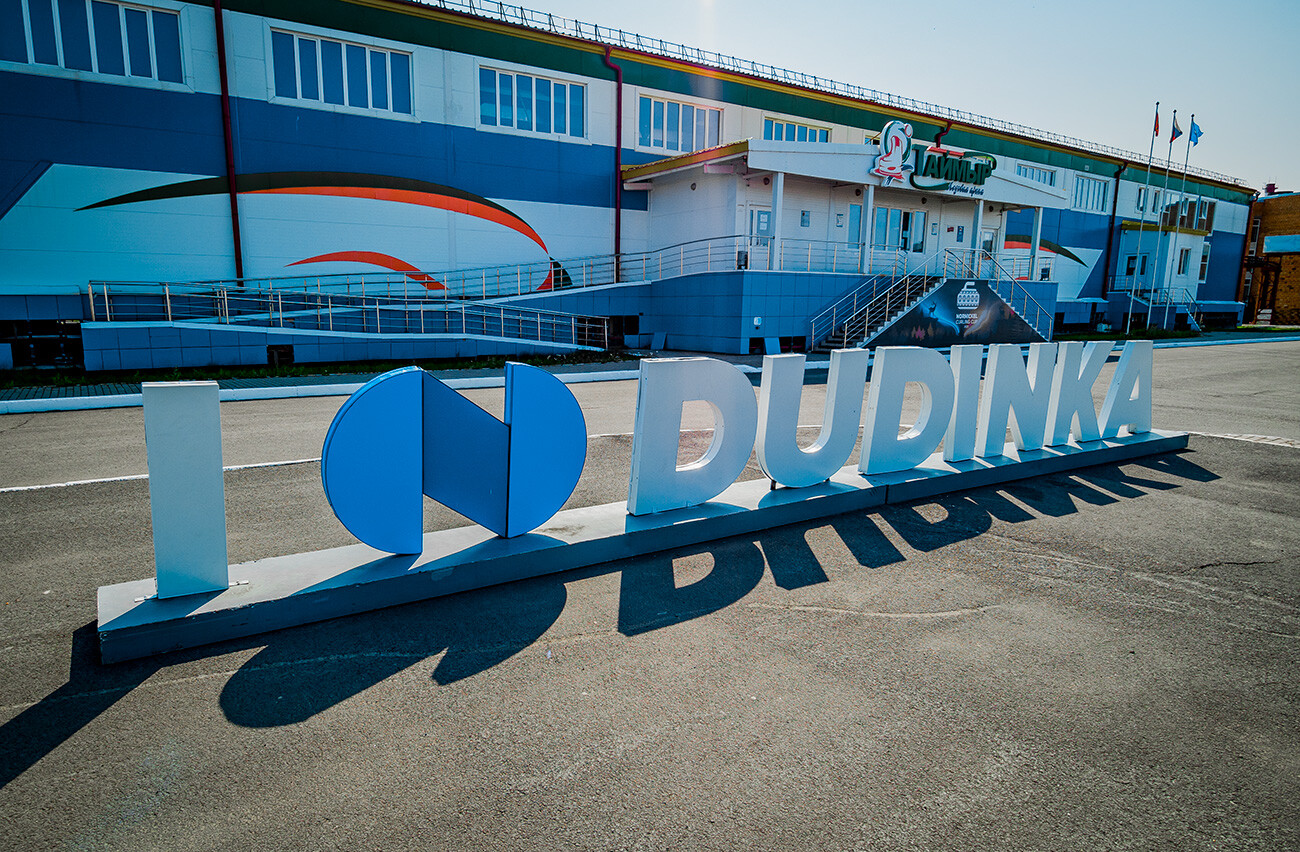
The ice arena.
Pavel KuzmichevWhen you arrive in Dudinka, you don't see a provincial town, but a real capital. It has everything: stores, a cinema, delivery pick-up points and even an ice rink, the only one in the world located inside the Arctic Circle! Often, international curling competitions are held in the city.

Despite Dudinka's rich history, no old houses have survived. A large proportion of residential districts are composed of Soviet "panelki" (panel-built apartment blocks) built on piled platforms driven into the permafrost. The buildings are painted in bright colors, in order to lift people's spirits during the long winter.
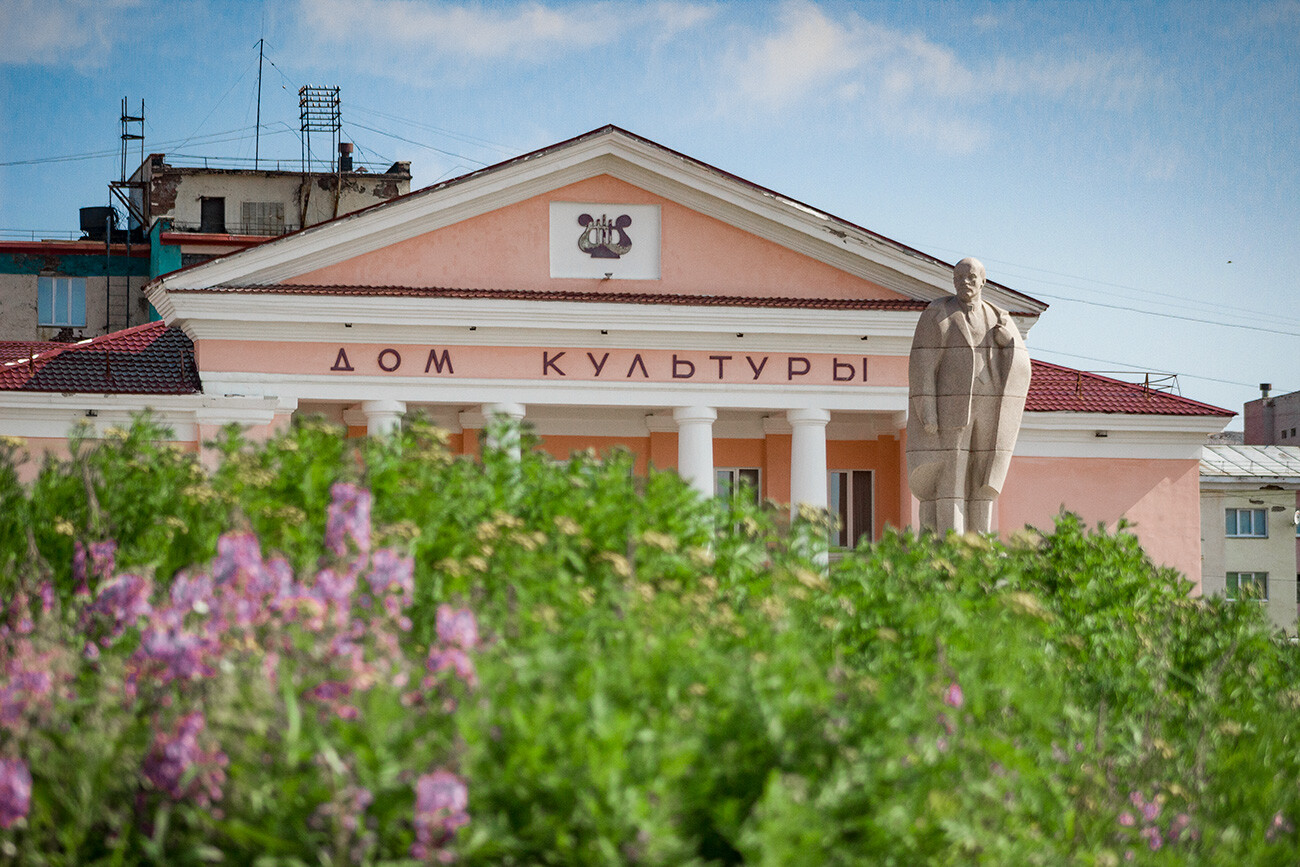
The House of Culture in central Dudinka.
Pavel KuzmichevWhen the weather is fine, local residents spend time in Aviatorov Square, where an An-24 aircraft – which used to take people to Krasnoyarsk, Khatanga and Dikson 20 years ago – is displayed.
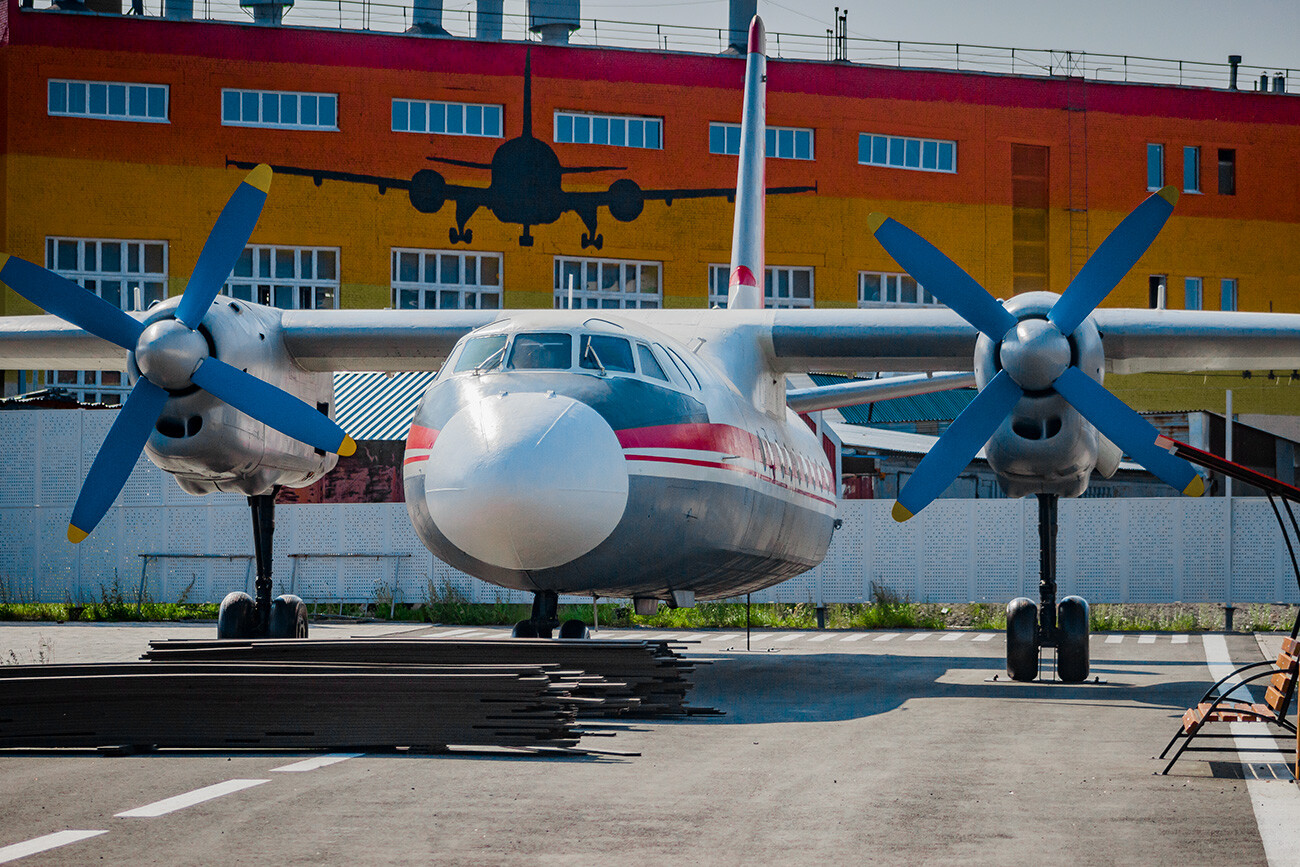
An-24 in Dudinka.
Pavel KuzmichevAside from Russians, who make up more than half the population of Taymyr, representatives of five Northern indigenous peoples live there: Dolgans, Nenets, Nganasans, Evenks and Enets. The 'Taymyr' weekly newspaper comes out in Dudinka with news not just in Russian, but also in these Northern languages.
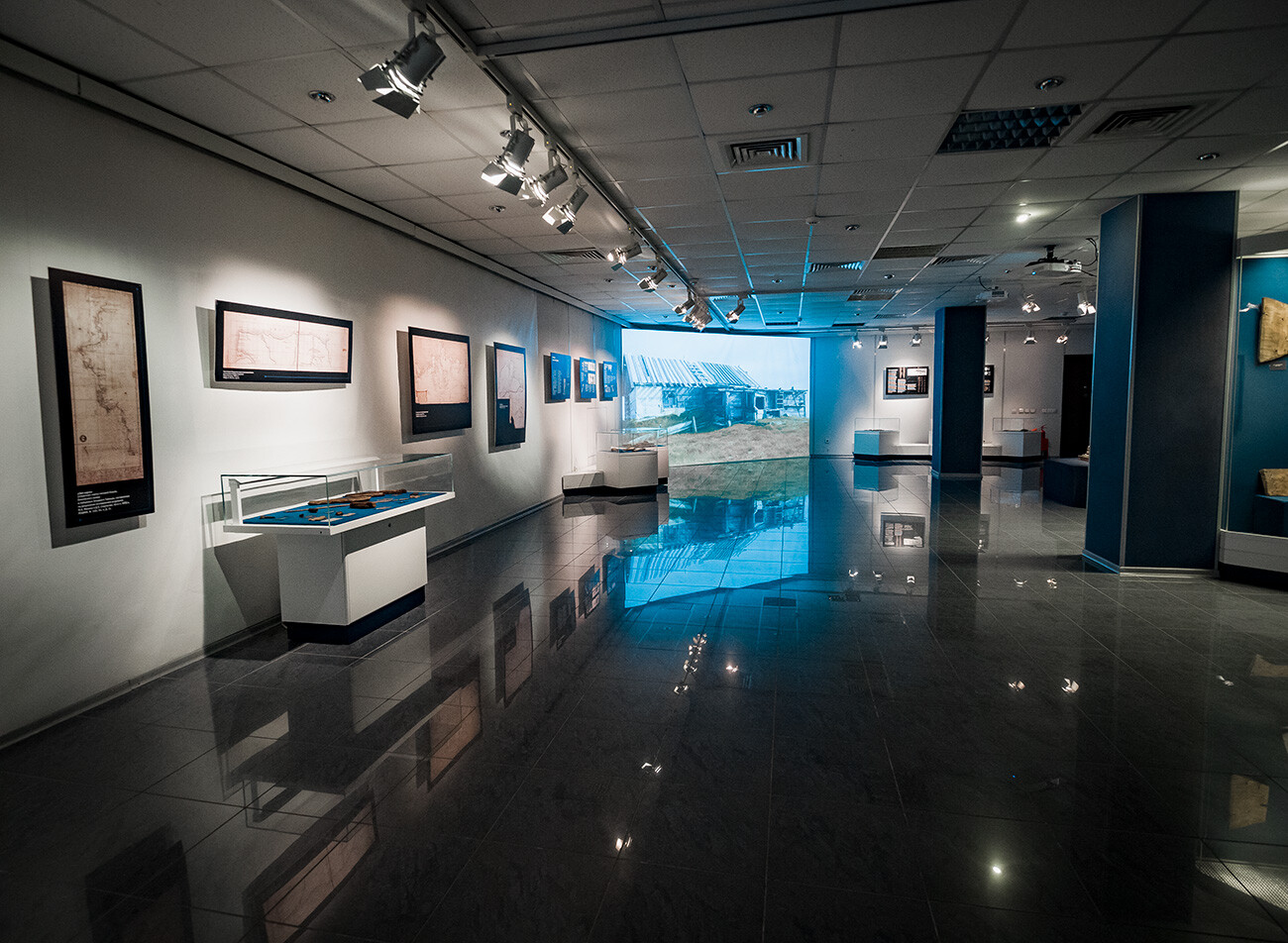
Inside the museum.
Pavel KuzmichevThere is also a museum of local history, one of the biggest and most interesting of its kind in the Arctic. It houses 90,000 of the most varied exhibits.
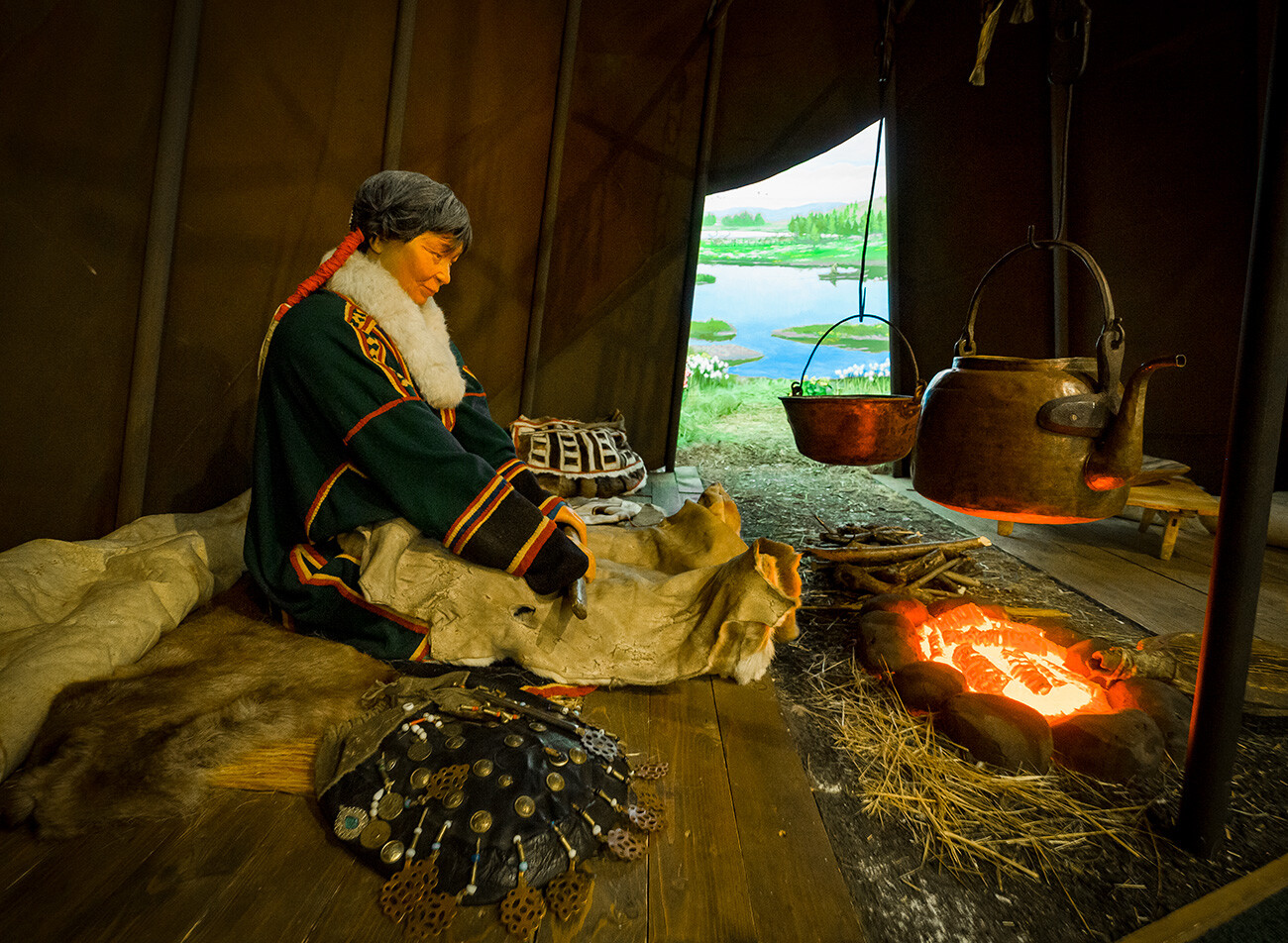
The museum collects everyday items of the Taymyr peoples.
Pavel KuzmichevThe displays include the everyday objects that helped the ancestors of today's inhabitants of Taymyr to survive in this harsh land, as well as shamanic ritual drums and masks.
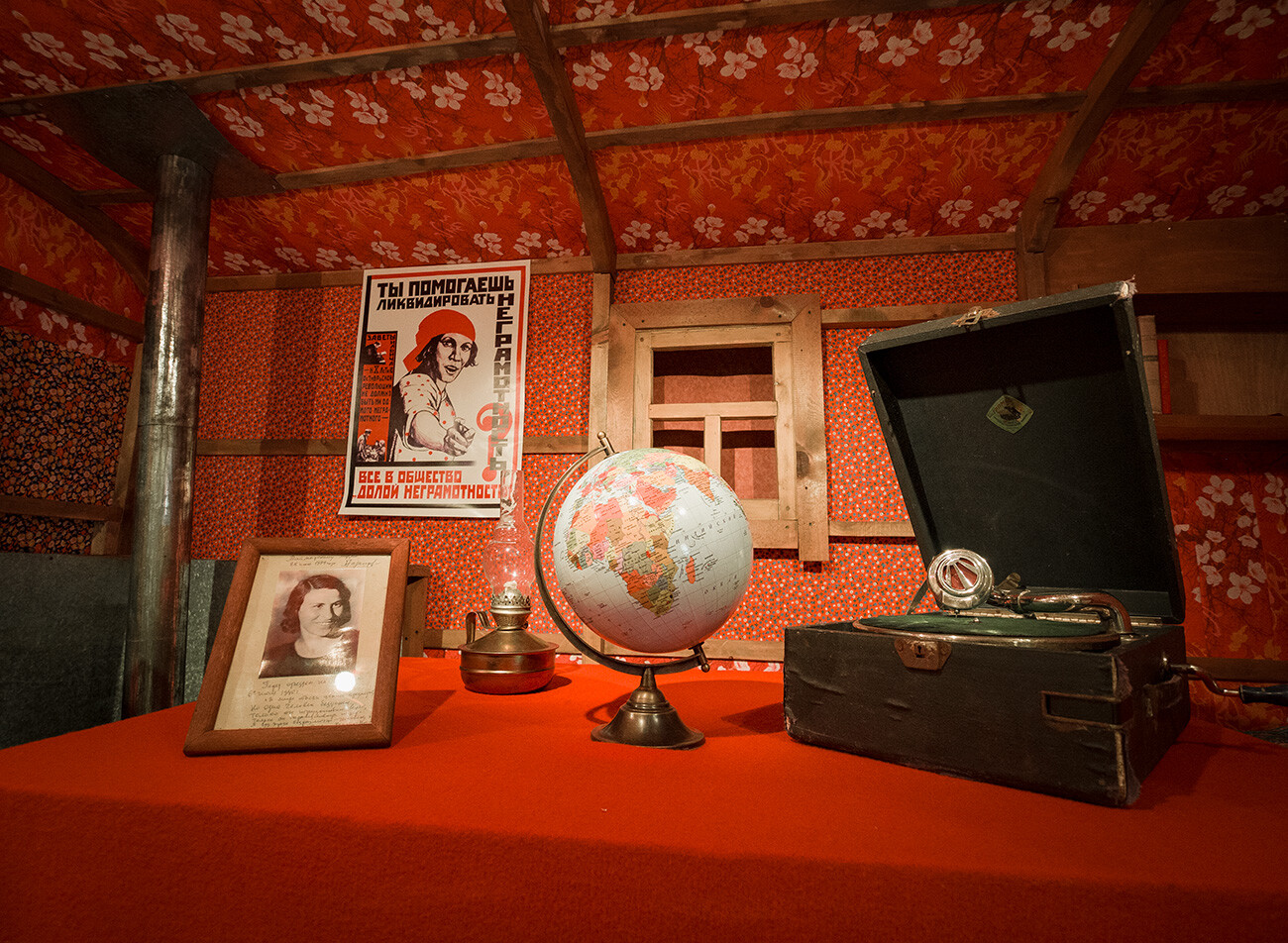
The exhibition dedicated to the Soviet exploration of Taymyr.
Pavel KuzmichevOne floor is dedicated to the Soviet-era history of Taymyr and the Arctic researchers and explorers of that period. Apart from all that, a mammoth by the name of ‘Zhenya’ can be viewed there – it is estimated to be around 45,000 years old! Scientists also discovered marks left by man-made tools on its carcass. Which means that humans were living in the Arctic much earlier than previously thought.
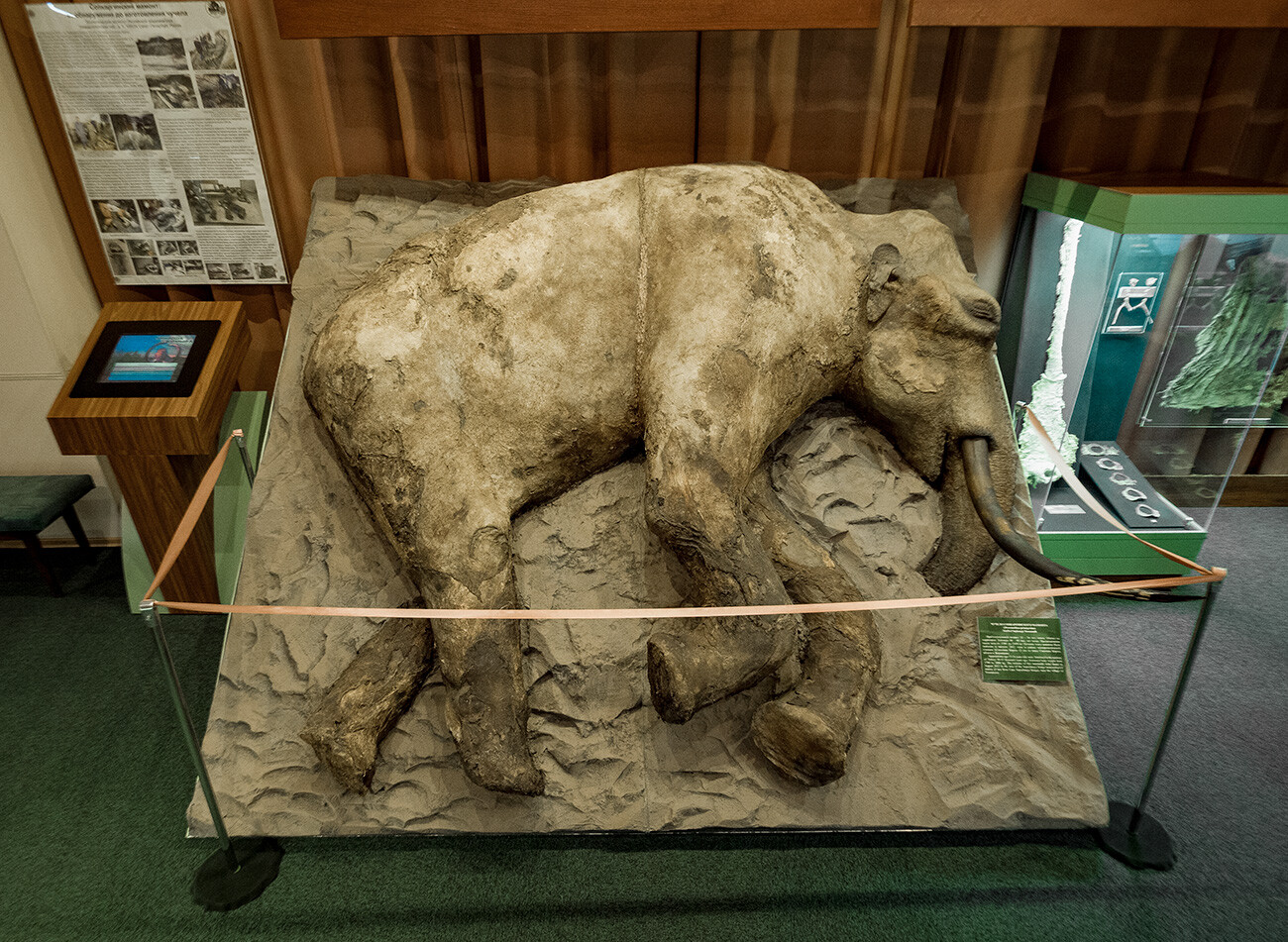
Mammoth Zhenya.
Pavel KuzmichevThe distance from Dudinka to Norilsk is 90 km through wooded tundra, swamps and permafrost. Neither of the two cities has land links with other regions of Russia. But they are connected to each other by a railway line, one of the most northerly in the world. It was built in 1937 and, until the end of the 1990s, perfectly ordinary suburban electric trains ran on it. Today, it is only used for freight. We will look at it in detail in a forthcoming article. Stay tuned!
Dear readers,
Our website and social media accounts are under threat of being restricted or banned, due to the current circumstances. So, to keep up with our latest content, simply do the following:
If using any of Russia Beyond's content, partly or in full, always provide an active hyperlink to the original material.
Subscribe
to our newsletter!
Get the week's best stories straight to your inbox